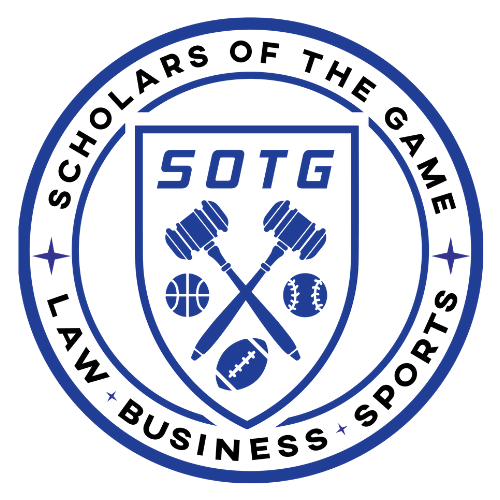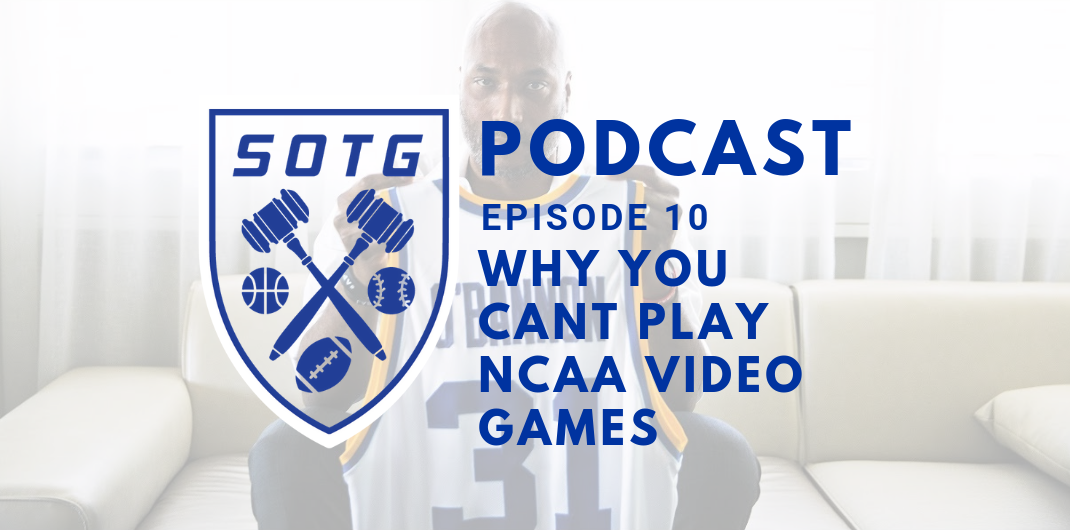The National Collegiate Athletic Association (NCAA) by David Wright
Historical Development of the NCAA
The first intercollegiate athletic competition was held in 1852, when Harvard and Yale competed in crew (Smith, 2011). Over the next half-century, institutions began competing against one another in baseball and football (Smith, 2011). They also sought control. Faculty at Yale banned baseball in 1868; Harvard faculty limited athletic events to Saturdays and university holidays; Harvard and Yale joined other Ivy League institutions to create a governing body over football in 1876; and, what is now known as the Big Ten was formed in 1895 (Smith, 2011).
However, these attempts at regulation, particularly in football, failed to control how games were played and who played them. In response to college football’s growing violence and corruption, President Theodore Roosevelt summoned leaders of prominent institutions to the White House in the fall of 1905 to discuss the need for reform (Smith, 2011). After this and other meetings, 68 institutions agreed to form the Intercollegiate Athletic Association of the United States, or what is now known as the National Collegiate Athletic Association (Smith, 2011).
In its’ fledgling early years, the NCAA sought to create standards where possible. In 1916, the NCAA defined its’ standard of “amateurism,” and sought to prohibit schools from offering financial aid to individuals unless academic eligibility and amateur status could be proven (Smith, 2011). The first NCAA sanctioned championships were held in 1921 in track and field, and in 1934 the NCAA established the Eligibility Committee and adopted rules governing recruiting (Smith, 2011). However, the NCAA’s early attempts to govern were largely futile, as it had no legislative or enforcement power over institutions.
Shortly after the first NCAA Tournament in men’s basketball was held in 1939, the NCAA was given some teeth. In 1941, member institutions voted to give the NCAA legislative and enforcement power, and over the next four decades, the NCAA made sweeping changes (Smith, 2011). It strengthened provisions for recruiting by creating a standing Constitution Committee in 1945. Walter Byers was appointed as full-time Executive Director in 1951, and would serve in that role until 1988. In 1956, the NCAA first approved “full-ride” athletic scholarships, more than 20 years after the Southeastern Conference independently approved the same. In 1961, it voted to allow students only five years to complete four years of athletic eligibility. In 1964, the policy of allowing only males to compete in its’ championships was codified, which would not officially change until the first NCAA Championships in women’s sports were held in 1981. In 1968, freshmen were allowed to compete in all sports, except football and basketball, although they could ultimately compete in those sports beginning in 1972. The 2.0 minimum high school grade-point average was adopted in 1973, and scholarships changed from four-year commitments to one-year renewable agreements (Smith, 2011).
The NCAA also began making its’ authority known by penalizing member institutions. In 1952, it issued a one-year ban, or the so-called “death penalty,” to the University of Kentucky basketball team as a result of a pay-for-play scandal and amateurism violations. The organization would not hand down such a stiff penalty for another 35 years, when it dealt the same punishment to the Southern Methodist University football program in 1987 for improper payments to recruits and players (Smith, 2011). Other examples of the NCAA’s enforcement power are available, such as the removal of scholarships, forfeiture of victories and championships, player ineligibility, and coach suspensions; but, these extreme cases demonstrate the potential price institutions could pay for failing to comply with NCAA rules, as well as the NCAA’s willingness to dole out even the harshest of penalties.
Contemporary Issues with the NCAA
Amid massive revenue to the NCAA and to big-time athletic departments, the staunch adherence to amateurism continues to be divisive. In 2009, former UCLA basketball standout Ed O’Bannon sued the NCAA and video game company Electronic Arts (EA), on behalf of all current and former NCAA Division I football and men’s basketball athletes (Chudacoff, 2015, p. 143). The O’Bannon suit claimed the NCAA and EA’s use of athletes’ likenesses for marketing and selling video games was a violation of antitrust law and the Fourteenth Amendment (Chudacoff, 2015, p. 143). In addition to millions of dollars, the NCAA’s amateur standard was at stake, as O’Bannon alleged the players were the ones generating huge revenues and therefore should be able to license their names and likenesses (Chudacoff, 2015, p. 143). Ultimately, lower courts ruled that limiting what college athletes can earn violates antitrust laws; although the Ninth Circuit Court of Appeals diluted the District Court’s ruling by saying this compensation for athletes should be limited to education-related funds (New, 2017). When the Supreme Court declined to hear the case in October 2016, it simultaneously let stand the NCAA’s standard for amateurism while leaving open inevitably further judicial scrutiny of the model (New, 2017). With undoubtedly more litigation challenges ahead, it is likely the Supreme Court will ultimately, and perhaps soon, decide the fate of the NCAA’s long-standing policy of amateurism.
Another contemporary challenge for institutions and the NCAA is the legality of penalties imposed on institutions and individuals by the NCAA. Kaplin and Lee (2011, p. 649) note that institutions engage the NCAA in litigation in two ways: individually penalized coaches and students sue the institution and the NCAA challenging enforcement, and institutions themselves sue the NCAA challenging rules or decisions. Whatever the mechanism through which penalties may be challenged, the scope and equity of NCAA penalties on institutions and individuals are often controversial in the court of public opinion.
While the NCAA has twice issued the “death penalty” for instances of pay-for-play, academic eligibility, or improper benefits in recruitment, recent scandals with similar or even more egregious institutional complicity have received less punishment. In the wake of findings of improper benefits to a star player and his family and citing a “lack of institutional control,” the NCAA stripped the University of Southern California (USC) of its’ 2004 football national championship, took away 30 scholarships over three years, banned the Trojans from postseason play for two seasons, and declared Reggie Bush retroactively ineligible and forced him to relinquish his Heisman Trophy (Zisner, 2011). In June 2017, the NCAA suspended University of Louisville men’s basketball coach Rick Pitino for five games and gave a 10-year ban to a former assistant coach, following an investigation of allegations the assistant hired female escorts for sex parties with players and recruits (Axson, 2017). Louisville is expected to vacate all wins that included ineligible players over a four-year period, likely including the school’s 2013 national title championship (Axson, 2017). With both USC in football (Zisner, 2011) and Louisville in basketball Axson, 2017), the NCAA’s removal of national championships was a first.
Perhaps the most notable NCAA punishment of recent years involves the storied football program at Penn State. After a serial child molestation scandal emerged in 2011 involving former assistant coach Jerry Sandusky, which led to his conviction on 45 counts of sexual abuse of minors and sentence to at least 30 years in prison, the NCAA found a “lack of institutional control” and a “total disregard for the safety and welfare of Sandusky’s child victims” by Penn State administrators, including the University’s President, Athletics Director, and long-time football coach Joe Paterno (Chudacoff, 2015, p. 143-144). Still, the NCAA did not issue the “death penalty,” imposing instead a loss of 40 total scholarships, a four-year postseason ban, a $60 million fine, and the removal of all victories from 1998-2011 (Chudacoff, 2015, p. 144).
NCAA Constraints on Higher Education
Regardless of the criticisms, and the perceived
hypocrisy in its’ massive profits yet affixed adherence to amateurism, it seems
highly unlikely to separate big-time college sports from the NCAA. In addition
to the power given to the NCAA to make rules and levy penalties, institutions
are likely beholden to the organization because of the flow of revenue. While
the NCAA profits off big-time college football through TV contracts and
sponsorship agreements, the organization’s cash-cow is the annual Division I Men’s
Basketball Championship. In 2010, CBS and TNT agreed to pay $19.6 billion for
TV rights to the tournament until 2032, with the NCAA getting $1.1 billion per
year beginning in 2025 (Kim, 2017). Per the NCAA, more than 90 percent of this
revenue will go to student-athletes through programs or direct distributions,
which still means the NCAA is retaining over $100 million annually for this
tournament alone (Kim, 2017). Scrutiny and calls of hypocrisy to the NCAA for
collecting so much revenue for refusing to discuss refining the amateurism
standard are perhaps rightly levied. But, with so much revenue flowing from
commercial partners through the NCAA, institutions and especially
student-athletes are likely to remain a prisoner of this system for the foreseeable
future.
References
Axson, S. (2017, June 15). Pitino suspended 5 ACC games after sex scandal probe. Retrieved June 17, 2017, from https://www.si.com/college-basketball/2017/06/15/louisville-ncaa-infractions-report
Chudacoff, H. P. (2015). Changing the Playbook: How Power, Profit, and Politics Transformed College Sports. Urbana, IL: University of Illinois Press.
Kaplin, W. A., & Lee, B. A. (2011). The Law of Higher Education (4th ed.) San Francisco: Jossey-Bass.
Kim, J. (2017, March 20). 19.6 billion EdTech lessons from the NCAA March Madness contract. Retrieved June 18, 2017 from https://www.insidehighered.com/blogs/technology-and-learning/196-billion-edtech-lessons-ncaa-march-madness-tv-contract
New, J. (2016, October 4). An amateurism challenge evaporates, but others loom for NCAA. Retrieved June 15, 2016 from https://www.insidehighered.com/news/2016/10/04/supreme-court-declines-hear- obannon-case-focus-turns-other-antitrust-lawsuits
Smith, R. A. (2011). Pay for Play: A History of Big-Time College Athletic Reform. Urbana, IL: University of Illinois Press.
Zinser, L. (2011, June 6). U.S.C. Loses its 2004 B.C.S. National Championship. Retrieved June 16, 2017 from www.nytimes.com/2011/06/07/sports/ncaafootball/usc-stripped-of-2004-bcs-national-championship.html




